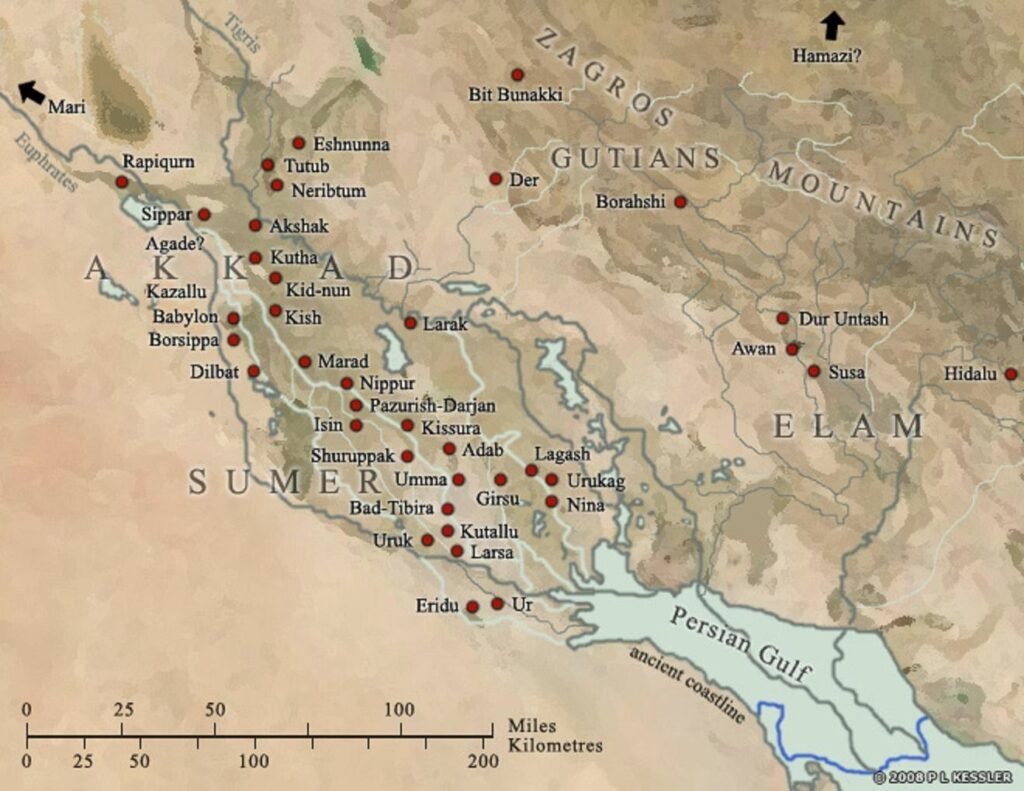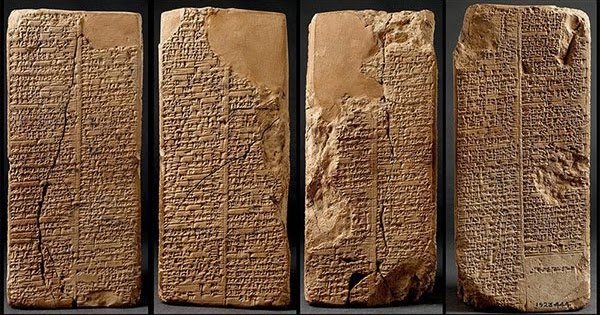Eight Kings Descended From Heaven And Ruled For 241,200 Years – The Sumerian King List Unveiled
Today, “The Sumerian King List” remains one of the most controversial ancient texts ever discovered in history, which clearly describes how a group of enlightened beings descended from heaven to rule Earth. And the total length of their domination was 241,200
years! How is that possible?

Out of the many incredible artifacts that have been recovered from sites in Iraq where flourishing Sumerian cities once stood, few have been more intriguing than the Sumerian.
King List, an ancient manuscript originally recorded in the Sumerian language, listing kings of Sumer (ancient southern Iraq) from Sumerian and neighboring dynasties, their supposed reign lengths, and the locations of “official” kingship. What makes this artifact so unique is that the list blends mythical pre-dynastic rulers with historical rulers known to have existed.
The Sumerian Civilization & The Sumerian King List

The origins of Sumerian civilization in Mesopotamia are still debated today, but archaeological evidence indicates that they established roughly a dozen city-states by the fourth millennium BC. These usually consisted of a walled metropolis dominated by a ziggurat — the tiered, pyramid-like temples associated with the Sumerian religion.
Major Sumerian city-states included Eridu, Ur, Nippur, Lagash, and Kish. Still, one of the oldest and most sprawling was Uruk, a thriving trading hub that boasted six miles of defensive walls and a population of between 40,000 and 80,000. At its peak around 2800 BC, it was most likely the largest city in the world. In simple words, Ancient Sumerians had influenced the world enormously as they were the reason behind the world’s first urban civilization.
Out of all the ancient discoveries from the Mesopotamia region, the “Sumerian King List” is genuinely the most enigmatic one. It’s an ancient text in Sumerian language, dated back to the 3rd millennium BCE, listing all Sumer kings, their respective dynasties, locations, and times in power. While this may not seem like too much of a mystery, it’s what is inscribed along with the list of kings that makes it so puzzling. Along with a who’s-who of Sumerians in power, King List also incorporates events such as the Great Flood and the tales of Gilgamesh, often referred to as simple fables.
The Sumerian King List Unveiled Some Astounding Things To Historians

Discovered over the years by scholars in many regions of ancient Mesopotamia, copies of what is believed to be a unique manuscript, referred to as “Sumerian King List” or “the List of the Sumerian Kings,” details how in the distant past, our planet was ruled by eight ― some versions have ten ― mysterious kings for an irregular period of 241,200 years. The ancient script even states that these rulers “descended from heaven.”
The List of the Sumerian Kings tells an incredible story that many find hard to believe:
“After the kingship descended from heaven, the kingship was in Eridug. In Eridug, Alulim became king; he ruled for 28,800 years. Later, Alalgar ruled for 36,000 years. Then Eridug fell, and the kingship was taken to Bad-tibia. En-menu-ana ruled for the next 43,200 years. After that, En-men-gal-ana ruled for 28,800 years, and Dumuzid, the Shepherd, ruled for 36,000 years. Then Bad-tibia fell, and the kingship was taken to Large. In Large, En-iPad-did-ana ruled for 28,800 years. Then Lara fell, and the kingship was taken to Zimbio, where En-men-dur-ana ruled for 21,000 years. Then Zimbio fell, and the kingship was taken to Shuruppag, where UbaraTutu ruled for 18,600 years. In 5 cities, eight kings ruled for 241,200 years. Then the flood swept them over….”
These were written in the first part of the List of the Sumerian Kings. To know more in detail, read this eBook about the Sumerian King List here.
But How Is It Possible That Eight Kings Ruled The Earth For 241,200 Years?
Experts believe that the answer is simple: the list combines prehistoric and “mythological” dynastic rulers, who enjoyed long and implausible kingdoms with more plausibly historical dynasties.
In other words, scholars are telling us that some things written on the list of Sumerian kings are correct, while others-like relentlessly long reigns-can not be.
Interestingly, the list details how these eight kings met the end during the Great Flood that swept the Earth. The list also describes what happened after the flood since it clearly says that “other royalty came down from heaven,” and these mysterious kings ruled man once more.
But is the List of the Kings Sumerian a mixture of historically verifiable kings and mythological beings? Or is it possible that scholars have classified some rulers as unbelievable due to their peculiar characteristics?
For decades, people believed that the detailed history in the List of the Sumerian Kings, the kings with incredibly long lives, their disappearance during the Great Flood, and their replacement with the new kings that came from heaven, were just another set of mythological stories. However, many authors and researchers disagree, suggesting that what is on the List of the Sumerian Kings can not be mythology at all. Scholars today, in part, recognize some of the Kings detailed in the list.
What if?
The fact that the List of the Sumerian Kings mentions eight kings, their names and long kingdoms, as well as their origin ― the royalty that came down from heaven ― has made many think: “Is it possible that what is written on the List of the Sumerian Kings be real historical references? What would happen if, thousands of years ago, before modern history, our planet was ruled by eight other-world kings who came to Earth from a faraway place in the universe and ruled over Earth for 241,200 years to then return to the heavens?”
What if the details found in the Sumerian King List are one hundred percent accurate and that, unlike the mainstream scholars, these impassible reigns were a possibility, at a time when civilization, society, and our planet were very different from what it is today? Do these ancient texts show that ancient astronauts ruled the Earth for 241,200 years? Or, as the scholars mention, the List of the Sumerian Kings is only a mixture of historical records and mythology?
It is worth mentioning that in the ancient text, there is a ruler who has been archaeologically and historically verified; it is Enmebaragesi de Kish, approximately 2,600 BC.
There’s another king list from ancient Egypt known as the “Turin King List,” which tells of several mysterious kings who once ruled Egypt for thousands of years before the Pharaohs.



